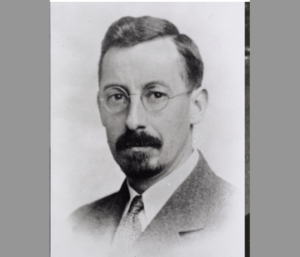II. The Homeric Language as the Language of an Oral Poetry
By Milman Parry

I. The Homeric Language and the Homeric Diction
Older Theories of the Homeric Language
The Homeric Language as a Poetic Language
The Homeric Language as an Oral Poetic Language
II. The Traditional Poetic Language of Oral Poetry
The Formula
The Archaic Element
The Art of Traditional Poetry
It is the same in all thriving oral poetries. The good singer wins his fame by his ease and versatility in handling a tradition which he knows more thoroughly than anyone else and of which his talent shows him the highest use, but his poetry remains throughout the sum of longer and shorter passages which he has heard. [29]
The Foreign Element
The Artificial Element
3. The Study of a Traditional Poetic Language
4. The Homeric Language as a Traditional and Oral Poetic Language [43]
The Ionic Recording
Arcado-Cyprian, Aeolic, and Ionic
The Arcado-Cyprian Element
The Aeolic Element
The Traditional Language of Lesbian Lyric Poetry
The Artificial Element
Equivalent Aeolic Forms
The Ionic Element
5. Conclusions
The Theory of an Aeolic Homer Rejected
{42|43} Here we clearly have to do with a singer and no reciter; he is singing to Ionians; and he says that there are many other singers and that each of them has his own songs. One is forced to grant that this Hymn, in which we find the very same poetic language as in the Iliad and Odyssey, was the work of an Ionian, in the diction common to all other heroic poets of his time, at a moment when the tradition of epic poetry was still that of creation and not of recitation.
The Theory of an Aeolic Diction Accepted
(β 127-128, σ 288-289). We have the system ἡμει̑ς δὲ δείσαντες (ι 236, 396), ἡμει̑ς δὲ κλαίοντες (ι 294), ἡμει̑ς δὲ ἰάχοντες (δ 454). [76] Among the nine uses of ἡμει̑ς μὲν we find ἡμει̑ς μὲν τὰ ἕκαστα διείπομεν (Λ 706, μ 16), ἡμει̑ς μὲν γάρ (γ 262, 276) [77] . Nor are the 13 cases of ἡμει̑ς at the verse-end due wholly to chance: the word is regularly used there as a means of filling in the last foot of a verse in which the fifth foot has ended with -ομεν, -ομεν ἡμει̑ς, making, as it were, merely a longer personal ending. Thus we find ἐπέφνομεν ἡμει̑ς (Κ 478), εἴπομεν ἡμει̑ς {44|45} (α 37), κατελείπομεν ἡμει̑ς (λ 53, 447), ἔκταμεν ἡμει̑ς (μ 375), ἐπιέσσαμεν ἡμει̑ς (υ 143). We also find ἡμει̑ς at the end of the verse in the formulaic passage
(Δ 48-49, β 69-70). We are sometimes unable to analyze so exactly the artifice of verse-making which carries in itself the possibility of changing Ionic ἡμει̑ς to Aeolic ἄμμες, but we may be sure, nevertheless, that it is only because the small remnant of Greek heroic poetry which we still have does not let us follow everywhere the vastly varied technique of the diction.
The History of the Greek Heroic Style
Footnotes
τέρπειν ὃππηι θυμὸς ἐποτρύνηισιν ἀείδειν,
Χ 347αὐτοδίδακτος δ᾽ εἰμί, θεὸς δέ μοι ἐν φρεσὶν
παντοίας ἐνέφυσεν.
[ back ] For the meaning of αὐτοδίδακτος cf. Kalevala, I, 36 ff*; Radloff, op. cit., pp. xx xxi; H. Basset, Essai sur la littérature des Berbères (Algiers, 1920), pp. 330-331.